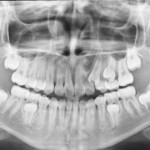The first step is to determine whether braces are suitable for the patient. The doctor consults with the patient and inspects the teeth visually. If braces are appropriate, a records appointment is set up whereX-rays, molds, and impressions are made. These records are analyzed to determine the problems and proper course of action.
|
OPG x-ray |
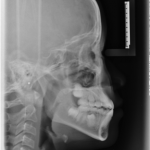 Lateral cephalogram X-ray |
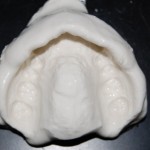 Upper impression |
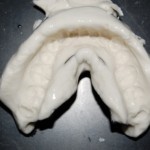 Lower impression |
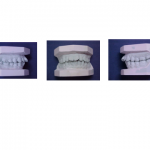 Study model |
Typical treatment times vary from six months to two and a half years depending on the complexity and types of problems.
Teeth to be braced will have an adhesive applied to help the cement bond to the surface of the tooth. A bracket will be applied with dental cement, and then cured with light until hardened.
An archwire will be threaded between the brackets and affixed with elastic or metal ligatures. Ligatures are available in a wide variety of colors, and the patient can choose which color they like. Archwires are bent, shaped, and tightened frequently to achieve the desired results.
The placement and configuration of the rubber bands will depend on the course of treatment and the individual patient. Rubber bands are made in different diameters, colors, sizes, and strengths.
When applying another type of dental brace, such as Invisalign, the process is quite different but there are similarities like the initial steps of molding the teeth before application. With Invisalign, impressions of the patient’s teeth are sent for evaluation. After viewing and determining the best course of action for the patient, their series of trays are created. The patients dentist or orthodontist receives the trays which fit to the patients mouth almost like a protective mouthpiece.
In many cases there is insufficient space in the mouth for all the teeth to fit properly. There are two main procedures to make room in these cases. One is extraction: teeth are removed to create more space. The second is expansion.. Since the bones of adults are already fused, expanding the palate is not possible without surgery to unfuse them.
Every four to six weeks, the braces must be adjusted. This helps shift the teeth into the correct position. When they get adjusted, the orthodontist removes the colored or metal ligatures keeping the archwire in place. The archwire is then removed, and may be replaced or modified. When the archwire has been placed back into the mouth, the patient may choose a color for the new elastic ligatures, which are then affixed to the metal brackets. The adjusting process may cause some discomfort, which is normal.
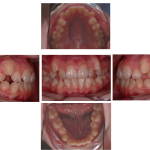 Before Treatment |
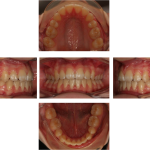 After treatment |
Post-treatment
In order to avoid the teeth moving back to their original position, retainers may be worn once the treatment with braces is complete in all respects.
Retainers
In order to prevent the teeth moving back to their original position, retainers may be worn once the treatment with braces is complete for the patient depending on their specific needs. Retainers help in maintaining and stabilizing the position of teeth long enough to permit reorganization of the supporting structures after active phase of orthodontic therapy.
If the patient does not wear the retainer appropriately for the right amount of time, the teeth may move towards their previous position. They are few types of retainers available, Hawley retainers are made of metal hooks that surround the teeth and are enclosed by an acrylic plate shaped to fit the patient’s palate. Essix retainer are similar to the regular invisalign braces and is a clear plastic tray that is firmly fitted to the teeth that stays in place, and does not have a plate fitted to the palate. There is also a bonded retainer where a wire is permanently bonded to the back side of the teeth.
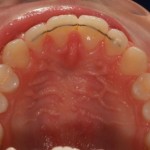 Fixed retainer |
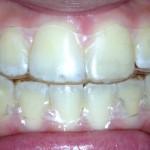 |
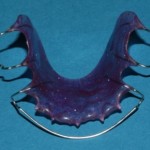 Hawley retainer |
